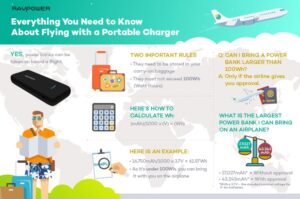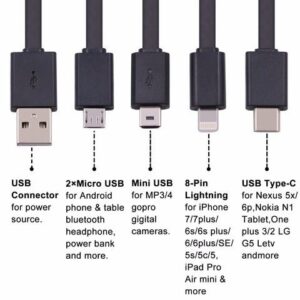Is your charger port mysteriously failing to do its job? Frustrating, isn’t it? Well, fear not! We’re here to shed some light on why isn’t my charger port working and provide you with practical solutions. So, if you’re struggling to power up your device or experiencing an unreliable charging connection, you’ve come to the right place. In this article, we’ll dive into the common reasons behind charger port malfunctions and offer some simple yet effective fixes. Let’s get started, shall we?
Why Isn’t My Charger Port Working?
Introduction
In today’s digital age, our smartphones and other mobile devices have become essential tools for communication, productivity, and entertainment. However, these devices rely on a steady power supply to function properly, and a key component in ensuring this power supply is the charger port. The charger port is where you connect the charging cable to your device for recharging its battery. But what happens when your charger port stops working? This article will explore the possible reasons why your charger port may not be working and provide solutions to help you get your device powered up again.
Common Issues with Charger Ports
Charger ports can be prone to various issues that can disrupt their functionality. Some of the most common problems include:
Loose Connection
A loose connection between the charging cable and the charger port is a frequent culprit for charging issues. Over time, the constant plugging and unplugging of the cable can loosen the port or cause it to become misaligned. This can prevent the proper transfer of power, resulting in charging difficulties.
Dirt and Dust Accumulation
Another common problem is the accumulation of dirt, lint, or dust inside the charger port. When these particles enter the port, they can block the connection between the charging cable and the port’s contacts. This can lead to charging problems or a complete inability to charge the device.
Damaged Charger Port
Physical damage to the charger port can also cause it to stop working. If the port is bent, broken, or has any visible signs of damage, it may not be able to establish a proper connection with the charging cable. Common causes of damage include inserting the cable aggressively, accidental dropping of the device while connected to the charger, or exposure to water or moisture.
Software Issues
Sometimes, the issue may not lie with the charger port itself but with the device’s software. A software glitch or bug can disrupt the charging process and make it seem like the charger port is not working. Software issues can often be resolved by performing a simple restart, updating the device’s software, or troubleshooting the software settings related to charging.
How to Troubleshoot a Non-Working Charger Port
When faced with a non-working charger port, there are several steps you can take to troubleshoot the issue before seeking professional help. Follow these steps to identify and potentially resolve the problem:
Step 1: Inspect the Charger Port
Start by visually inspecting the charger port for any physical damage. Look for signs of bending, debris, or other visible issues. If you notice any damage, it’s a good indication that the port needs repair or replacement.
Step 2: Clean the Charger Port
If you don’t see any visible damage, the next step is to clean the charger port. Gently insert a clean, dry toothbrush or a compressed air canister to remove any dirt, dust, or lint that may be obstructing the connection between the port and the charging cable. Be careful not to exert excessive force or use any liquids, as this can further damage the port.
Step 3: Try a Different Charging Cable and Power Source
Sometimes, the issue may not be with the charger port itself but with the charging cable or power source. Try using a different charging cable and connecting it to a different power source, such as a wall outlet or another device’s USB port. If your device starts charging with the new cable and power source, it indicates a problem with the original charger or power outlet.
Step 4: Restart Your Device
If the previous steps didn’t resolve the issue, try restarting your device. A simple restart can often fix minor software glitches that may be causing the charger port to malfunction. Hold down the power button until a restart option appears on the screen, then select restart. Once the device powers back on, check if the charger port is now functioning.
Step 5: Update Your Device’s Software
Outdated software can sometimes interfere with the charging process. Ensure that your device is running the latest software version by checking for updates in the settings menu. If an update is available, follow the prompts to install it. After the update, try charging your device again to see if the charger port is now working.
Step 6: Seek Professional Help
If none of the previous steps have solved the problem, it’s time to seek professional assistance. Contact the manufacturer’s customer support or visit an authorized service center to have your device examined by a technician. They will be able to diagnose the issue more accurately and provide the necessary repairs or replacements if needed.
Preventing Charger Port Issues
While some charger port issues are inevitable, there are steps you can take to minimize the risk of encountering them:
Handle Charging Cables with Care
Avoid yanking or pulling the charging cable forcefully when inserting or removing it from the charger port. Gently wiggle the cable if necessary, but always exercise caution to prevent damage to the port.
Avoid Dust and Dirt Exposure
Keep your device and charger port away from dusty or dirty environments whenever possible. Consider using dust plugs or covers to protect the port from external contaminants.
Use Surge Protectors
Invest in a surge protector or a power strip with built-in surge protection to shield your device and charger port from power surges. Electrical fluctuations can damage the charger port and other sensitive components.
Regularly Clean the Charger Port
Make it a habit to clean the charger port regularly, even if you don’t currently have any charging issues. This preventive measure helps remove potential debris that could accumulate over time and cause charging problems.
Avoid Excessive Heat or Moisture
Heat and moisture can damage the internal components of your device, including the charger port. Keep your device away from direct sunlight, extreme temperatures, and humid environments to prolong its lifespan.
The charger port is a crucial component of any mobile device, and when it stops working, it can be frustrating. By understanding the common issues that can affect charger ports and following the troubleshooting steps outlined in this article, you can resolve many charging-related problems on your own. Remember to handle your charging cable with care, keep the charger port clean, and take preventive measures to reduce the risk of damage. If all else fails, don’t hesitate to reach out to professional technicians who can assist you in getting your charger port working again.
Charger port not working? This tip could help!
Frequently Asked Questions
Why isn’t my charger port working?
Having trouble with your charger port? Here are some common questions and answers to help you troubleshoot the issue:
1. Why is my phone not charging when plugged in?
If your phone is not charging when plugged in, there could be several reasons. First, check the charger itself to ensure it is functioning properly. Try using a different charger or cable to eliminate any potential issues. Additionally, inspect the charger port on your device for any debris or damage that may be preventing a proper connection. It could also be a battery-related problem, in which case you may need to replace the battery.
2. Why does my charger keep disconnecting and reconnecting?
If your charger keeps disconnecting and reconnecting intermittently, it could be due to a loose connection between the charger and the charger port. Dust, lint, or debris in the port can hinder a stable connection. Try cleaning the port gently with a soft brush or compressed air. If that doesn’t solve the issue, the charger port itself might be damaged, and it may need to be repaired or replaced by a professional.
3. What should I do if my charger port is physically damaged?
If your charger port is physically damaged, such as bent pins or a loose port, it is best to seek professional assistance. Trying to fix it yourself might further damage the device. Contact the manufacturer, authorized service center, or a qualified technician to evaluate the port and provide the necessary repairs.
4. Why is my charger port not recognizing the charger?
If your charger port is not recognizing the charger, it could be due to issues with the charger itself, such as a faulty cable or incompatible charging brick. Try using a different charger or cable to see if that resolves the problem. If not, there might be an issue with the charger port’s circuitry, requiring professional repair or replacement.
5. Can software updates affect the charger port’s functionality?
Yes, software updates can occasionally impact the charger port’s functionality. Sometimes, after a software update, certain settings or configurations might change, leading to charging issues. In such cases, restarting your device or performing a factory reset can often rectify the problem. However, if the issue persists, it is advisable to reach out to the manufacturer’s customer support for further assistance.
Final Thoughts
If your charger port is not working, there could be several reasons for this issue. Firstly, it is possible that there is a problem with the charger itself, such as a damaged cable or a faulty adapter. Secondly, the charging port on your device might be dirty or filled with debris, obstructing the connection. Additionally, there could be a software issue that is preventing your device from recognizing the charger. Lastly, in some cases, the charger port itself might be damaged or worn-out, requiring professional repair or replacement. If you are facing difficulties charging your device, it is important to troubleshoot these various possibilities to determine the cause and find a suitable solution.




